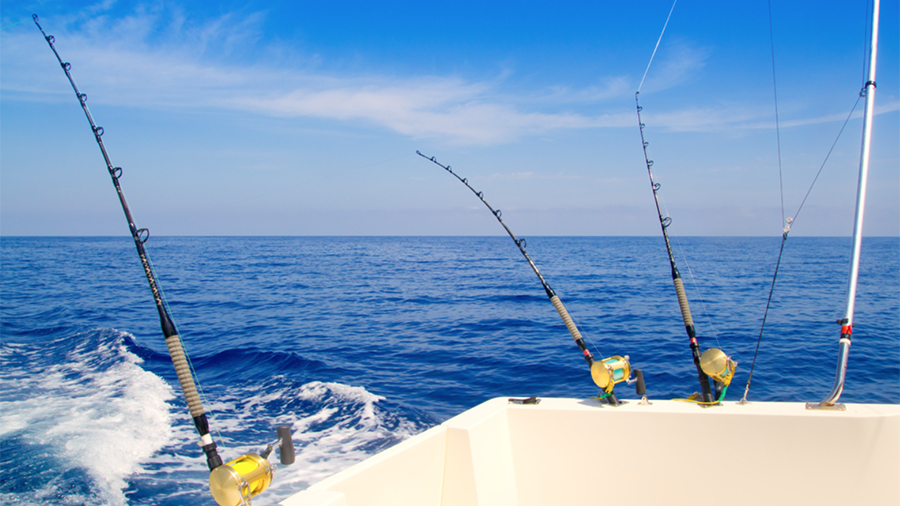Johnson Outdoors continued to see robust demand across its operating segments, but raw material shortages led to inventory shortfalls in its Fishing segment and a high-single-digit decline in its fiscal second-quarter sales.
Sales in the quarter ended April 1 fell 8.0 percent to $189.6 million. Sales in the six-month period were down 7.7 percent.
On a call with analysts, Helen Johnson-Leipold, chairman and CEO, said the quarter’s decline reflected tough comparisons against the company’s “unprecedented second quarter” a year ago when sales surged 26 percent. However, the decline also reflected inventory shortages in the Fishing segment that impacted the company’s ability to meet demand.
“The great news is that people continue to want to recreate outdoors and we’re seeing continued robust demand for our products across the businesses,” said Johnson-Leipold. “At the same time, global supply chain disruptions continue to persist and the inflationary environment and deep political issues create many uncertainties. We’re prioritizing product build and we expect our margins to be challenged this fiscal year with the current supply chain dynamics. In the midst of these challenges, we remain focused on working hard to manage the supply chain issues and continue to fill orders.”
The Fishing segment, sales dropped 19.2 percent in the quarter to $129.3 million as continued demand was offset by supply chain disruptions that slowed the company’s ability to complete and ship finished goods. The segment includes Minn Kota fishing motors, batteries and anchors; Cannon downriggers; and Humminbird marine electronics and charts.
Operating profit in the Fishing segment in the quarter fell 72.0 percent to $11.3 million from $40.4 million. Sales in the six months were down 17.2 percent.
Said Johnson-Leipold, “In Fishing, anglers continue to look to Johnson Outdoors for the best fishing experiences possible and demand across all product lines remains strong. Ongoing supply issues and component delays are slowing our ability to complete and ship finished products. We have invested in available components, so we’re positioned to finish products as we receive the remaining parts. This is a very difficult and challenging environment. I’m very proud of the hard work the team is doing to help us get our products to market.”
The Camping segment revenue outpaced market growth and increased 34.6 percent in the quarter to $19.2 million, benefiting from significant growth in both consumer tents and stoves. Operating profit grew 81.9 percent to $5.1 million. Sales in the six months in the Camping segment advanced 26.0 percent. The Camping segment includes Jetboil outdoor cooking systems and Eureka! camping and hiking equipment.
In the Watercraft Recreation segment, revenue also exceeded market growth and grew 29.4 percent in the latest quarter to $23.0 million, driven by higher sales for the Sportsman line of products. Operating profit gained 12.4 percent to $3.2 million. Sales in the half were up 24.4 percent. The segment includes Old Town canoes and kayaks, Ocean Kayak and Carlisle paddles.
“In Watercraft Recreational and Camping, we’re building on momentum as both businesses continue to benefit from a surge in participation in the activity,” said Johnson-Leipold. “Both businesses continue to see double-digit sales growth and are outperforming the market. In Watercraft Recreation, growth in the fishing kayak segment continues with high demand for the innovative Sportsmen line that has shown continued strength in the market. In Camping, demand for Eureka! consumer tents and stoves continues to be strong. And in Jetboil, consumers remain excited about the super-light Stash stove that is in its second year on the market.”
In the Diving segment, sales grew 28.1 percent in the quarter to $18.2 million and operating profits reached $1.2 million against a loss of $1.3 million a year ago. Sales in the six months grew 22.6 percent. The Diving segment includes the ScubaPro dive equipment brand.
“Dive markets are showing signs of recovery,” said Johnson-Leipold. “Our work to promote and support local diving and to enhance our global digital presence, including e-commerce, have helped this positive growth. We remain focused on these efforts along with sustained innovation to ensure ScubaPro’s position as the most trusted dive brand in the world.”
Dave Johnson, VP and CFO, said the supply chain shortages are pressuring margins that aren’t being offset by pricing actions.
“Demand remains strong across the business and we’re continuing to face disruptions in our supply chain,” said Johnson. “As a result, our ability to meet the demand for our products has been impacted, especially in the fishing business. As a result of the supply shortages, we’re experiencing increases in costs which are impacting our gross margins. While we’ve taken pricing increases across all of our businesses, these actions have not entirely offset the increases in cost inputs. We expect margins to be pressured through the balance of the fiscal year as we prioritize meeting the strong demand.”
He added, “Additionally, we’ve been strategically building higher than normal inventory levels, primarily in raw material. We continue to work closely with all of our vendors in planning for alternate alternative sources of supply for critical components where feasible.”
Operating profits in the second quarter fell 57.2 percent to $15.4 million. Gross margins lost 9 basis points to 36.2 percent year over year due primarily to increased material costs, higher inbound freight and lower absorption from decreased volume. The primary impact came from the higher raw material costs.
Operating expenses in the quarter decreased $4 million versus the prior year primarily due to lower sales volume-driven expenses as well as lower variable and deferred compensation expenses. Net earnings tumbled 64.4 percent to $9.9 million, or $2.74 a share, from $27.8 million, or $2.74, a year ago.
Said Johnson, “We continue to have no debt on the balance sheet and our cash position enables us to invest in opportunities to strengthen the business. We remain confident in our ability to deliver long-term value and consistently pay dividends to shareholders.”
















